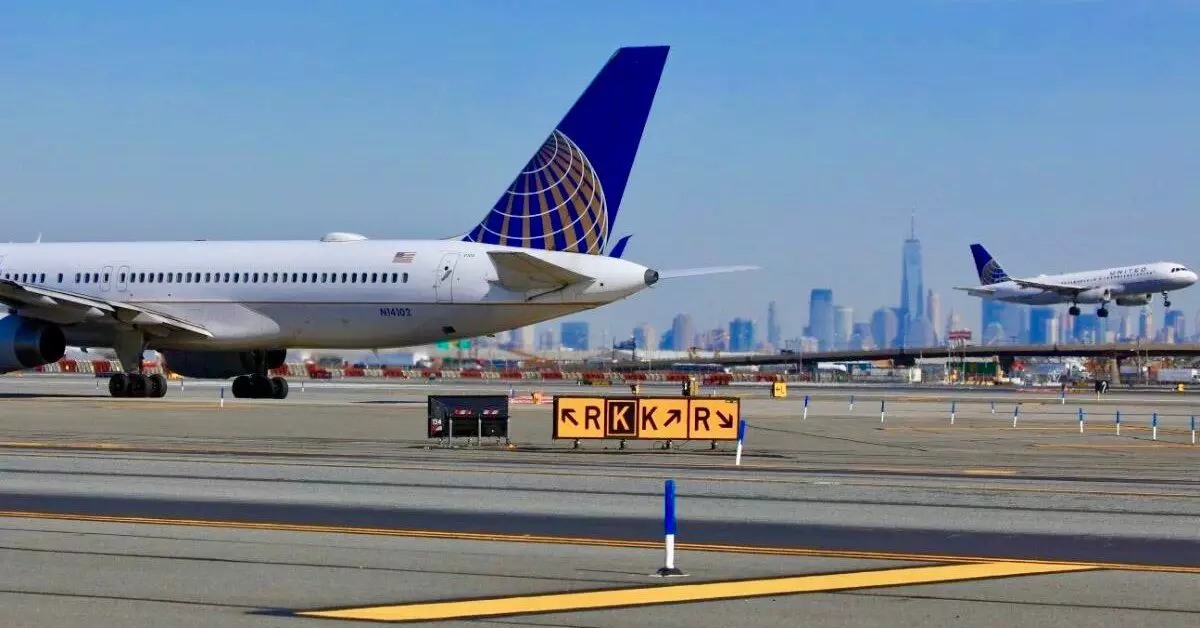In an alarming sequence of events that echoes dire warnings about the state of air traffic management in the U.S., Newark Airport has found itself embroiled in yet another radar failure incident. Early Friday morning, without warning or a clear reason, air traffic controllers lost radar functionality in a critical hub that directs air traffic into and out of Newark, compounding an already precarious situation. This blackout lasted for 90 seconds at 3:55 a.m. and followed closely on the heels of a similar radar outage just two weeks prior, demonstrating a worrisome trend that cannot be overlooked.
The Federal Aviation Administration (FAA) has stated that the consequences of this radar outage have again rippled through air travel, leading to 57 cancellations and close to 300 flight delays, driving the total disruptions at Newark this week to an astounding 1,700 instances. Such operational failures call into question not just the reliability of airport technology, but the very safety protocols intended to protect passengers and crew alike. The FAA has made it clear that they had to slow traffic significantly to prioritize safety, but how much longer can we maintain such a precarious balancing act?
The Human Cost of Inadequate Staffing
Among the most disturbing aspects of this debacle is the human toll it has taken. Reports indicate that five air traffic controllers have gone on trauma leave since the first outage on April 28, a sign of the emotional strain placed on high-stakes professions amidst incessant disruptions. This has exacerbated an already critical shortage in staffing, with only 22 controllers currently overseeing operations where at least 60 are required to handle efficient traffic management. This shocking understaffing reflects a culture where safety appears secondary to operational inefficiencies. As New Jersey Representative Josh Gottheimer pointedly remarked, “Our region is a key economic artery for our country.” Yet, it seems an alarming number of personnel—along with outdated technology—hamper its functioning.
Having worked with equipment that dates back to the 1980s, some controllers are using copper wiring that is not only archaic but unreliable. The implications of relying on such antiquated technology while managing one of the most congested airspaces in the world are staggering. Gottheimer’s comments about a system that operates off “the Brady Bunch era” are not just humorous; they serve as a stark reminder of how antiquated infrastructures can undermine modern expectations of efficiency and safety.
A Glimmer of Hope Amid Urgency
In response to the ongoing crisis, the FAA is promising modernization by installing fiber-optic data lines that will eventually replace the outdated connections currently in use. Although this development is promising, there is a significant caveat: the timeline for these repairs remains uncertain. Waiting for technology upgrades while facing an operational crisis is not a viable long-term solution. Moreover, with the potential for other controllers to take leave, each passing day elevates the risk of further disruptions.
Transportation Secretary Sean Duffy has put forth a multibillion-dollar proposal aimed at overhauling the nation’s aging air traffic control systems. This ambitious plan hinges on the installation of 4,600 modern high-speed connections and the replacement of 618 outdated radar systems nationwide. However, while the efforts are commendable, they emerge in response to tragedy, such as the tragic midair collision that claimed 67 lives earlier this year. It raises the daunting question: how many more incidents must occur before necessary changes are implemented?
The Need for Immediate Action
The current situation at Newark Airport reflects a systemic issue that extends well beyond a single facility—it is indicative of a nationwide crisis affecting air traffic control. Outdated technology, a lack of sufficient staffing, and delayed modernization plans signify a broken system that demands immediate attention.
As society continues to grapple with advancements in technology across all sectors, it begs the question of why air travel—an industry so pivotal to global connectivity—remains tied to decades-old systems. The soaring rates of flight delays and cancellations are not simply inconveniences; they are harbingers of a more dangerous reality. The safety of travelers hangs in the balance, and proactive measures must not only be taken but must be prioritized to ensure a secure and efficient aviation future.


Leave a Reply